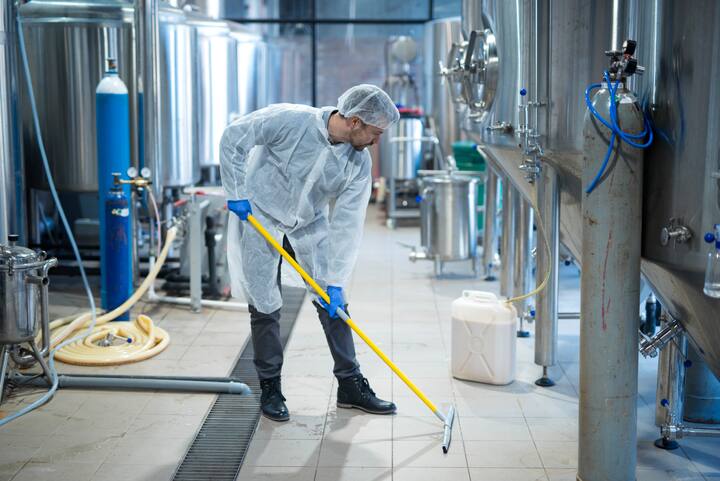
What do the new Dutch Guidelines on Cross-Contamination of Allergens entail?
What do the new Dutch Guidelines on Cross-Contamination of Allergens entail?
The Dutch Food and Drink Federation (FNLI) recently published its Guidelines on Allergen Cross-Contamination. These are the official guidelines drawn up by the FNLI in collaboration with the Central Food Trade Association (CBL) at the request of the Ministry of Health, Welfare and Sport (VWS). They supplement the new amendments to the VWS Allergen Policy, which must be implemented by 1 January 2026, and the Communication from the European Commission accompanying Regulation (EU) No 852/2004, published in 2022. What do the new guidelines contain and what do they mean for you as a food business?
What does the guideline say?
The guidelines cover information management, cleaning, validation, risk assessments and the warning label for cross-contamination allergens, also known as PAL (precautionary allergen labelling). The guidelines are summarised in the basic criteria for the use of PAL. These clarify that the use of PAL on a label or product specification must be substantiated by:
Information showing that cross-contamination can actually occur in practice;
A risk assessment showing that the amount of allergen does not exceed the safe limit;
Documentation showing that preventive measures have been taken and cross-contamination is unavoidable, so that a PAL is not used instead of taking preventive measures.
If this substantiation is lacking, a PAL may not be used. The document explains in detail how this substantiation can be established on the basis of (raw material) information and management, preventive separation, cleaning and validation, and the use of a risk assessment. Clear examples and tips are also provided.

Allergen Management White Paper
Would you like to learn more about allergen management and how you can guarantee the safety of your products? Download our free white paper on allergen management and discover practical tips and insights that you can immediately apply to your business operations. The following topics are covered:
Allergen management over time
The impact of allergens from products and processes
Concrete steps for a successful allergen management system

What does this mean for manufacturing companies?
Over the next year and a half, it will be important to set up an allergen management plan and ensure that the correct PAL information is included on packaging. The allergen management plan allows you to collect and manage all allergen information. This plan consists of:
Allergen information about all raw materials, packaging materials, as well as process and technological additives. This also includes cross-contamination from previous steps in the chain (preferably in mg of allergenic protein). The information must be up to date and can be a completed questionnaire, a statement from the supplier or a product specification. It is therefore recommended that you include allergen information in your own product specifications.
An overview of raw material and product separation in terms of place and time.
An overview of the production sequence and how allergens have been taken into account.
A cleaning plan that takes into account the allergen profile of the products. If cleaning is used to prevent cross-contamination with allergens, this is also included in a cleaning matrix or production sequence.
Validation of cleaning procedures. Each type of cleaning used to prevent cross-contamination with allergens must be validated. Each type of cleaning must have its own validation plan with supporting documentation, samples, analyses and interpretations.
A risk assessment that takes into account the new reference doses, consumption size (and how this is substantiated), homogeneous and point contamination, and the ultimate risks posed by cross-contamination.
An overview of products for which a PAL is used, how it is worded, and how it is substantiated (based on the above information).
Getting started with allergen management There is a lot to do. In practice, we see that many companies still do not have allergen management sufficiently in order and really need to get started on this now. The new guidelines are clear and easy to implement in existing food safety systems. The document is full of practical tips, useful examples and the necessary clarifications.
Get started now, and you will be well prepared for 2026. Our allergen experts are available to provide additional assistance.